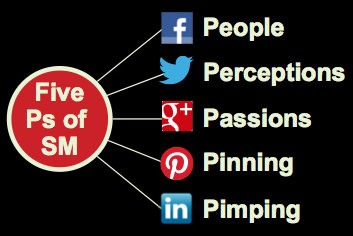Facebook, Twitter and Google+ have made marketing to large audiences easier, Guy Kawasaki says – as long as you can stand out as as an influential voice.
 At his June 26th Vocus webinar, Guy, Apple’s former chief evangelist, presented 10 principles for building social media influence from his recently-published book APE.
At his June 26th Vocus webinar, Guy, Apple’s former chief evangelist, presented 10 principles for building social media influence from his recently-published book APE.
Missed Guy’s webinar? Register for an on-demand version now!
Here are Guy’s tips for building social media influence:
1. Start yesterday
If you wait for the launch of your company or a product to start using social media, you’re too late.
It’s better to have established a reputation and relationships before launching a company or product because people can trust you and know what you have to offer.
2. Find the right social network for you
Each social media platform has strengths and weaknesses. Here’s how Guy breaks down how people use the most popular social networks:

Not all social networks are equal. Use ones that help you achieve your goals.
Facebook – Connect with people you already know and share personal things.
Twitter – Blast out personal perceptions, such as a comment about the long line at Starbucks. Not much integration of pictures and video.
Google+ – Meet new people who share your passions.
Pinterest – Curate interesting things. Not suited for every industry.
LinkedIn – Promote yourself for job-finding purposes and business development. Also good for content development.
3. Make a great profile
Guy compared a social media profile to the website Hot or Not, where people glance at a snapshot of a person and judge their attractiveness.
Social media profiles are not eHarmony, which tracks a number of factors, he said.
To be more appealing, delete your default avatar and use a high-quality headshot.
Be wary of having too much in the picture. A picture with a spouse or pet tells a fuller story, but the avatar is not a place to do that.
Instead, tell your story in the background images, while observing the rule of thirds.
The bottom of your profile is acts as a social media resume where people can see who you engage and what you’re interested in.
4. Curate and link
Producing high-quality content on a regular basis is difficult. Instead of stressing about writing or producing something new, create value by sharing other people’s interesting content.

Guy Kawasaki created value by sharing ESPN’s story.
5. Cheat
Find and share stories that are already trending or (better yet) are on the verge of trending.
When doing this, determine why the source posted it. If they posted it to get more followers, reshare it. If the aim is to get views for a video, feel free to embed it onto your blog.
6. Restrain yourself
A marketer’s social media goal should be to share good content, not to do self-promotion.
Guy uses the NPR as a model for how to provide content. NPR provides so much valuable information that when it comes time for them to promote its fundraiser, people will send money or at least tolerate the interruption.
Guy recommended doing self-promotion once in 20 posts.
7. Add bling
Add eye-catching images and video to your post. Ensure that the pictures and the video appear big enough in your posts. If you have to, take the time to resize it.
“(The messages) without bling, the ones without pictures or video, aren’t going to get nearly as much attention,” Guy says.
8. Respond
Even if you provide bling, you still must engage people. Often brands want to promote, but they don’t want to engage.
When you post, people will watch to see if you engage your followers or if you are just doing one-way blasts.
9. Stay positive or stay silent
Though it’s always better to take the high road, Guy says he sometimes has a tough time with this piece of advice.
If engaged in a tense social media exchange, remember amateur boxing. After three rounds, the fight ends. For example, you post, someone attacks, you respond and that’s it. Do not respond anymore.
Even if you are 100 percent correct and outline your ideas properly, your reputation could take a hit.
10. Repeat good stuff
When it comes to Twitter, feel free to repost something several times. Guy says he often quadruples his tweets, sending them every eight hours.
Having so many of the same tweets is hardly a disruption because of the ephemeral nature of the medium. However, posting it four times gives Guy the ability to reach a wider audience.
An easy way to tell if you have repeated too much? Monitor the engagement of the tweet. If the number of retweets and clicks remains steady each time, you’re good. If it drops off, you probably tweeted it too much.
Make social media marketing easy: Demo the Vocus Marketing Suite today!![]()

